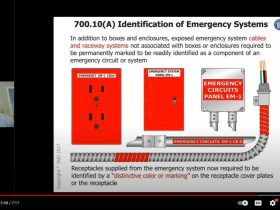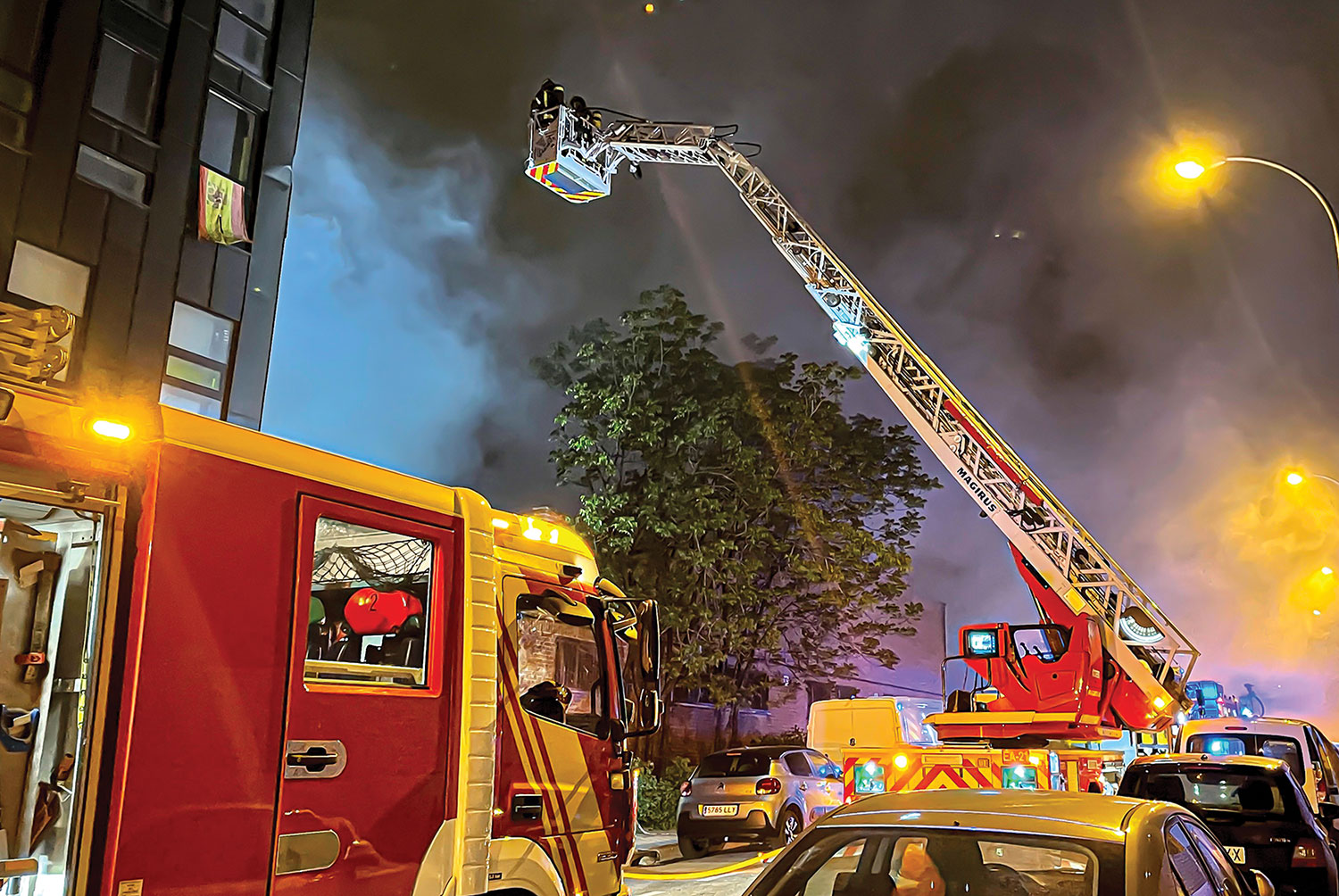In September 2001, New York was horrified by the destruction of the World Trade Center due to terrorist activities. In July 2005, New Orleans was heavily damaged by flooding from broken dikes resulting from Hurricane Katrina. In October 2006, Hawaii was rocked by numerous earthquakes. In November 2006, the Pacific Northwest was inundated by flooding from massive rains. In November 2006, North Carolina was damaged by tornadoes. All of these disasters had one thing in common—Expectations!
The people affected by these disasters expected immediate response by appropriate personnel and restoration of normal activities within a reasonable time. They expected police and fire operations to protect them and their property, that their electricity, gas, water, and sewer would operate for their survivability, and that their banks would provide money for food and other essentials.
These expectations of a quick response require continuity of operations by the police, fire, and emergency medical personnel. In addition, the second layer of disaster response also requires a continuity of operations for hospitals, electrical power, communications, and other essential services. This need for continuity of operations has long been part of planning by federal, state, and municipal governments as well as the business community. However, especially after the terrorist attacks on the World Trade Center, concerns arose over the ability of certain infrastructure facilities to survive man-made disasters or even natural disasters. The first attempt to address these concerns in the building code arena is the proposed new Article 585, Critical Operations Power Systems, for the 2008 National Electrical Code (NEC).
How Did Article 585 Come About?
The Department of Homeland Security (DHS) has spent considerable time and effort in assessing the needs of the United States for protection against terrorist’s attacks. DHS is also accountable for the response to natural disasters through the Federal Emergency Management Agency (FEMA). One of the concerns raised during these assessments was the ability of a community’s emergency response system and related infrastructure to withstand natural and manmade disasters. These concerns were relayed to the National Fire Protection Association (NFPA) which created a Task Group on Emergency and Standby Power Systems for Homeland Security.
This Task Group met in August of 2005 with the mission of reviewing the NEC-2005 and other NFPA documents to identify where the current minimum requirements do not adequately address the level of integrity to withstand disasters. In addition to the NEC-2005, the Task Group also reviewed the provisions of NFPA 1600–2004 edition, Standard on Disaster/Emergency Management and Business Continuity Programs; NFPA 110–2005 edition, Standard for Emergency and Standby Power Systems; and NFPA 111–2005 edition, Standard on Stored Electrical Energy Emergency and Standby Power Systems.
The first question the Task Group tried to answer was exactly what constitutes a critical operations facility. It is important to remember that this task group met in August 2005 during the Hurricane Katrina disaster in Louisiana which provided stark examples of failures in communications and public infrastructure. Another point to remember is that there is currently no comprehensive definition or listing of those facilities that could be considered as critical operations occupancies. The Task Group created a listing of possible critical operations facilities that included uses such as air traffic control centers, hazardous material handling operations, emergency communication needs, medical operations, and police, fire, and other critical public works operations. It was also discussed that many business continuity operations are considered critical to the public’s ability to withstand disasters including financial institutions, radio and television stations, and data storage operations. This list became the proposed fine print note (FPN) Number 2 to Article 585.1 Scope.
The Task Group’s next question to answer was exactly what electrical systems were required for these critical operations facilities and how to provide sufficient reliability for continuity of operations in these facilities. This question consumed the most time spent in the actual Task Group meeting as well as the follow-up emails and telephone conference calls. The discussion about this question covered the types of hazards that could arise from the naturally occurring events—such as earthquakes, hurricanes, floods, fires, and blizzards—to human caused events—such as bombings, chemical attacks, biological agents, or nuclear devices. The results of this discussion became the proposed FPN No. 6 to 585.1, Scope. Additional discussions covered the required installations of the electrical system and how best to provide survivability of the system during or immediately after disasters. This discussion eventually resulted in the language of the proposed new article for the NEC-2008.
The Task Group’s submittal, authored by Alan Manche with the Square D Company, to the NEC Technical Correlating Committee (TCC) became Proposal 20-1 Log Number 3497 for inclusion of a new article and annex within the NEC-2008. In the Task Group’s substantiation for this new article it was noted that these are “minimum requirements for those electrical systems where continuity of power and operation of systems is paramount.” The NEC TCC created a new code-making panel (CMP) 20 to handle the proposal for Article 585, Critical Operations Power Systems, and Annex H, Availability and Reliability for Critical Operations Power Systems; and Development and Implementation of Functional Performance Tests (FPTs) for Critical Operations Power Systems. The members of the NFPA Task Group were included in the membership of CMP-20 as well as other technical individuals to insure a broad-based review of the proposal.
CMP-20 met for three days in January of 2006 to discuss Proposal 20-1. Discussion covered the original work of the NFPA Task Group on critical operations facilities and their required electrical system requirements. The result of these discussions was an Accept in Principle in Part action on Proposal 20-1. The NFPA Regulations Governing Committee Projects defines Accept in Principle in Part as accepting the proposal with a change in wording in parts of the proposal. CMP 20’s action is explained in the following excerpt of the panel statement to its action on Proposal 20-1:
“In addition to editorial changes, for clarity and style manual compliance, the panel has made technical revisions to the recommended text for the purposes of providing enforceable (sic), prescriptive requirements for the installation and operation of a highly reliable power system for the operation of a mission critical facility. Additionally, there are two proposed annexes intended to provide useful design information.”
With this action by the panel and pending any additional action during the NEC-2008 Report on Comments meeting held in December 2006, a new Article 585, Critical Operations Power Systems, a new Annex F, Availability and Reliability for Critical Operations Power Systems; and Development and Implementation of Functional Performance Tests (FPT’s) for Critical Operations Power Systems, and a new Annex G, 585.60 Supervisory Control and Data Acquisition (SCADA) will be included in the NEC-2008.
What is Article 585?
The layout of Article 585, Critical Operations Power Systems (COPS), is listed below.
I. General
585.1 Scope
585.2 Definitions
585.3 Application of Other Articles
585.4 Risk Assessment
585.5 Physical Security
585.6 Testing and Maintenance
585.8 Commissioning
II. Circuit Wiring and Equipment
585.10 Feeder and Circuit Wiring
585.11 Branch Circuit and Feeder Distribution Equipment
585.12 Feeders and Branch Circuits Supplied by COPS
585.14 Wiring of HVAC, Fire Alarm, Security, Emergency Communications, and Signaling Systems
III. Power Sources and Connection
585.20 Sources of Power
585.22 Capacity of Power Systems
585.24 Transfer Equipment
585.30 Branch Circuits Supplied by COPS
IV. Overcurrent Protection
585.50 Accessibility
585.52 Ground-Fault Protection of Equipment
585.54 Coordination
V. System Performance and Analysis
585.64 Emergency Operation Plan
General Information about COPS
As with any other article contained within theNEC, the Scope and Definition Sections provide invaluable information. For Article 585, 585.1, Scope, provides the basis for the application of this new article. There are two paragraphs both of which are important reading. The first paragraph states:
The provisions of this article apply to the electrical installation, operation, monitoring, control, and maintenance of critical operations power systems consisting of circuits and equipment intended to supply, distribute and control electricity to designated vital operations in the event of disruption to elements of the normal system.
CMP-20 placed language in the scope section that expands upon any previous language used in the NEC. Not only does the Scope cover installation, operation, and control of systems but it also requires monitoring and maintenance of these systems. CMP-20 understood that the systems being proposed within this Article 585 are a step above any other system in the NEC due to the increased need for reliability and survivability. CMP-20 acknowledged that current NEC language, most notably in Articles 700, 701, and 517, has provisions for continued operations in non-normal situations, however, Article 585 situations must provide for continued operations under much more severe conditions and for a longer period of duration than those other articles envisioned. Thus, CMP-20 conceded that in addition to installation, operation and control requirements there must be some monitoring and maintenance requirements implemented to insure that the critical operations facilities continue to operate in periods of extreme crisis.
The second paragraph of the scope section follows: “Critical operations power systems are those systems so classed by municipal, state, federal, or other codes, by any governmental agency having jurisdiction or by facility engineering documentation establishing the necessity for such a system.”
This paragraph clearly indicates that Article 585 will not delve into the designation of critical operations facilities but relegates that designation to entities. CMP-20 accepted that the authority or need for designation of critical operations facilities is outside of the scope of the NEC as this designation is more appropriately performed in the building code arena. In order for Article 585 to perform as intended, there must be facilities built stronger than normally required by current building codes to protect the actual physical critical operations function.
In addition to governmental needs, CMP-20 granted that the requirements of Article 585 lend themselves to the needs of the business community for continuity of operations. Disasters not only affect individuals but also businesses. For many businesses, it is vital that their operations continue under any circumstances. Thus, the last part of the second paragraph gives business entities the ability to document the need for classification of there facilities as requiring a COPS installation.
There are two definitions contained in Section 585.2 that need mentioning in understanding the requirements of Article 585. The first is critical operations power systems (COPS). Power systems for facilities or parts of facilities that require continuous operation for the reasons of public safety, emergency management, national security, or business continuity.” This language clearly indicates that Article 585 is intended for continuity of operations beyond the requirements in Articles 700, 701, and 517 for life safety. The definition also indicates that COPS is for a whole facility or a part of the facility. This part of a facility could be as large as the entire building or as small as a single room. The NEC will not limit the area of a site that can be designated as requiring COPS.
The second definition is designated critical operations areas (DCOA). Areas within a facility or site designated as requiring critical operations power.” This definition indicates that COPS is intended to supply a designated area and not just a single function. Article 585 is closer in concept to Article 517, Health Care Facilities, a designated area, rather than Article 700, Emergency Systems, wiring for a function. Again, CMP-20 relegated the designation of DCOA to governmental agencies or business entities and not the NEC.
One other section of Article 585 that bears mentioning is 585.4, Risk Assessment. This is a vital requirement within Article 585 as it communicates the necessity for examining the types of hazards or conditions that COPS must meet. This takes into consideration that the NEC cannot provide requirements to meet all climatic, geological, topographical, or human-caused events. This section is an expansion of Section 90.5(B), Adequacy, which states that the NEC “contains provisions that are considered necessary for safety … but not necessarily efficient, convenient, or adequate for good service.” As stated in 585.4(C), a strategy must be created for mitigation of the hazards not addressed by the NEC. This takes into account that hazards present in Florida may not be present in California or in Maine. Thus, Article 585 gives minimum requirements but does not cover all possibilities.
COPS Wiring and Equipment
Part II of Article 585 provides requirements for the installation and protection of the actual COPS wiring. The underlying theme here is that COPS wiring requires a higher level of physical protection than current language for emergency systems wiring. Specifically, COPS wiring must remain completely isolated from all non-COPS wiring and may not serve any loads not associated with the DCOA. All COPS feeder wiring must be physically protected by installation in rigid metal conduit, intermediate conduit, Type MI cable, schedule 80 rigid non-metallic conduit, or concrete encasement of schedule 40 rigid nonmetallic conduit, flexible nonmetallic or jacketed metallic raceways, or jacketed metallic cable assemblies listed for installation in concrete. In addition, COPS feeders must be listed electrical circuit protective system with a minimum 1-hour fire rating, be protected by a fire-rated assembly listed to achieve a minimum fire rating of 1 hour, be embedded in not less than 50 mm (2 in.) of concrete, or be a cable listed to maintain circuit integrity for not less than 1 hour when installed in accordance with the listing requirement. Wiring below the 100-year floodplain level must be suitable for wet locations.
COPS branch circuit wiring installed outside of the DCOA must be installed to the same requirements as feeder wiring. This provision does not apply to branch circuit wiring inside the DCOA which suggests that the wiring methods in NEC chapters 1 through 4 is permissible.
Finally, the COPS feeder distribution equipment must be located in spaces with a 2-hour fire rating and above the 100-year floodplain level. COPS branch circuit distribution equipment must be located with the DCOA that those branch circuits supply.
COPS Power Sources
Power sources for COPS are covered in Part III of Article 585. A power source in addition to the normal power source must be supplied for COPS. This additional power source must be installed in spaces fully protected by approved automatic fire suppression systems or in spaces with a 1-hour fire rating. The power source shall be installed as a separately derived system and grounded as required in NEC 250.30. This additional power source may be storage batteries, a generator set, an uninterruptible power supply, or a fuel cell system. Whatever the power source, it shall have the ability to carry the required loads, may supply other loads if selective load pickup, load shedding, and peak load sharing are present, and shall be capable of continuous operation for a minimum of 72 hours.
The concept expressed in this part of Article 585 is that an on-site second source of power be provided for continuity of operations in the DCOA. Also expressed is the idea that this second power source must last for a minimum of three days. The understanding by CMP-20 is that fuel resupply may not be readily available.
COPS Overcurrent Protection
There are three requirements of Article 585, Part IV, COPS overcurrent devices. The first restricts access of overcurrent devices to authorized personnel only. This requirement pertains to the physical security necessary for DCOA access. The second requirement addresses ground-fault protection for personnel by requiring an additional level of protection beyond that required in Section 230.95 or Section 215.10. This requirement attempts to prevent a ground-fault in a non-COPS feeder from causing a loss of power to COPS. The final requirement is for coordination of overcurrent devices. This should result in a fault being cleared at the lowest level overcurrent device possible.
System Performance and Analysis
Part V of Article 585 addresses the need for a documented emergency operations plan. This requirement goes towards the reliability and maintainability of COPS and the DCOA. This plan must address the actual operations during an emergency and the recovery of normal operations. This requirement will ensure that a comprehensive operational plan is in place to provide the continuity of operations expected for the critical operations function.
Benefits of Article 585
Article 585 is the first attempt to answer the response problems resulting from naturally occurring and human-caused events. DHS realized that the level of reliability of the emergency response infrastructure within the United States did not meet expectations. Additionally, concerns were raised over the ability to continue vital operations during and after these events. NFPA replied to these concerns by creating the Task Group on Emergency and Standby Power Systems for Homeland Security. This Task Group created a proposal for inclusion of a new article within the NEC-2008. The NEC TCC created CMP-20 to review the submitted proposal. CMP-20 worked during January 2006 and December 2006 to refine the proposal into a working part of the NEC-2008. Upon a vote by the membership at the upcoming 2007 NFPA Annual Meeting in Boston, Article 585 will become an official part of the NEC-2008.
Article 585 addresses the reliability and continuity of operations for those facilities, or parts thereof, that have been designated as critical to the operations of municipal, state, federal governments as wells as certain business operations. The article performs this function by requiring a document risk analysis of the particular event the facility may experience. An emergency operations plan is also created to insure continuity during and after the event. The wiring of this facility is then installed to preclude failures resulting from these events.
The benefit that will be realized from the application of the requirements contained in Article 585, Critical Operations Power Systems, is that naturally occurring or human-caused events should not cause a total collapse in the public infrastructure or a cessation of business activities. The goal of Article 585 is to save lives and protect property.










Find Us on Socials